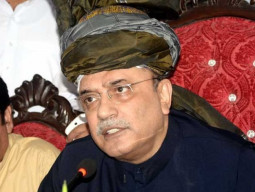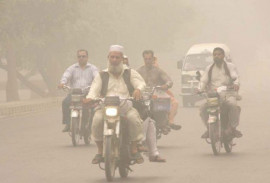
The recent news of merging the Alternative Energy Development Board (AEDB) with the Private Power Infrastructure Board came as a surprise. With the bulk of new investments in the power sector geared towards fossil fuel generation, are we losing our focus on alternative energy?
Pakistan’s electricity generation mix, as depicted in the recent Economic Survey, was 64% thermal, 30% hydro and 6% nuclear. Alternative energy, owing to its minuscule size, became a rounding error. Looking at the most recent Central Power Purchasing Agency data, we generated 112,000+ GWh of electricity in the last 12 months, out of which gas, Regasified Liquefied Natural Gas (RLNG) and furnace oil together accounted for almost 60% generation, while hydel contributed 27%. Renewable energy, including solar, wind and bagasse, accounted for less than 3% of this mix.
In comparison, in India these alternative sources contribute almost 15% to electricity generation. India has solar, wind and biomass generation installed capacity of 50,000+ MW, which is the double of our entire installed capacity. The proportion of global electricity coming from renewable sources was more than 11% in 2016.
Why is the world embracing renewable energy? Keeping the clean energy argument aside, let’s look at the costs. It may be useful to look at levellised tariffs, which provide average cost estimates over the project life.
The National Electric Power Regulatory Authority’s (Nepra) benchmark tariff for wind projects was set at 6.7 cents in 2017, for competitive bidding reflecting the upper cap. This is likely to settle between 5-6 cents. Only six years ago, Nepra gave an upfront tariff of 14.66 cents per KWh, showing the massive price decline due to advances in technology. Solar technology has shown an even greater drop. Although Nepra has not given any benchmark tariff, recently the Norwegian company Scatec Solar requested levellised tariff of less than six cents, 37% lower than the tariff proposed in 2016.
Looking at international trends, these costs are likely to drop significantly in the future. Masdar recently submitted the world’s cheapest bid for a 300MW solar power project in Saudi Arabia at 1.79 US cents per KWh, while Turkey recently offered 3.48 cents per unit of feed-in tariff for wind energy.
Tariffs for fossil fuel electricity can’t seem to match these rapidly dropping rates. The choicest technology in Pakistan presently seems to be RLNG, furnace oil (FO) and coal, while using HSD wherever essential. Even if we consider the most recent rates, they respectively stand at 6.75, 7.33 and 10+ cents per KWh, looking at Thar coal upfront tariff, Punjab Thermal Power Limited and other sources. Even the run-of-the-river projects seeking levelised tariffs of 9+ cents don’t make sense in the wake of much cheaper wind and solar choices.
These differences of few cents can make a great deal of financial impact. For instance, each cent of tariff difference translates into $1-1.4 billion every year for our entire power generation base. Last year, FO contributed approximately 28% to the mix. Had it come from a solar-powered source, it alone would have saved us $1+ billion. Moreover, the cost of fuel is generally a pass-through item, meaning that any increases in the price of oil will be added and the tariff would swell. We all know that oil prices have been depressed for long and they are likely to rise in the years to come.
Interestingly, we have immense unexplored solar potential whereas in the case of wind, the months of high wind speed seem to be perfectly aligned with our peak demand periods. The argument here is not to abandon RLNG and FO altogether but instead to use the existing fossil fuel-based capacity as a base load and change the mix with increased proportion of alternative sources.
Other countries have done that successfully. Germany, for instance, meets almost all of its domestic electricity demand through renewables at particular times of the year. Similarly, China boasts having the largest renewable energy capacity of 500+ GW. No wonder in 2016, 55% of the total power generation capacity added worldwide came from renewable sources and installation of new renewable capacity of 138.5 GW which became a new record.
Why then are we not witnessing this trend in Pakistan? Do we have investment constraints? Interestingly, Pakistan is now considered an increasingly attractive market for investment in renewable energy. Pakistan figured nowhere in the E&Y’s Renewable Energy Country Attractiveness Index in 2015 but rose to 38th position in 2016 and 26th in 2017.
However, attractiveness alone is not enough. To capitalise on this, we need to undertake renewable projects at a much larger scale, backed by strong institutional capacity. India has a dedicated ministry of new and renewable energy since 1992. Australia, the US and many other countries have dedicated agencies for renewable energy with varying roles. Germany also largely owes its success with renewables to the advocacy role played by the German Renewable Energies Agency.
Pakistan’s electricity consumption of roughly 540 KWh per capita is five times less than the world average of 2,700+ KWh. We have a long way to go in meeting our future energy needs. It is high time that we developed a dedicated focus on fixing our energy mix and initiated a transition towards renewable energy. This will not only lower our costs but will also decrease our reliance on imported fuel and reduce pressure on balance of payments. We therefore must carefully assess the institutional needs for the proposed AEDB merger and think through any future changes with this lens.
Published in The Express Tribune, November 9th, 2017.
Like Opinion & Editorial on Facebook, follow @ETOpEd on Twitter to receive all updates on all our daily pieces.

































































COMMENTS (1)
Comments are moderated and generally will be posted if they are on-topic and not abusive.
For more information, please see our Comments FAQ